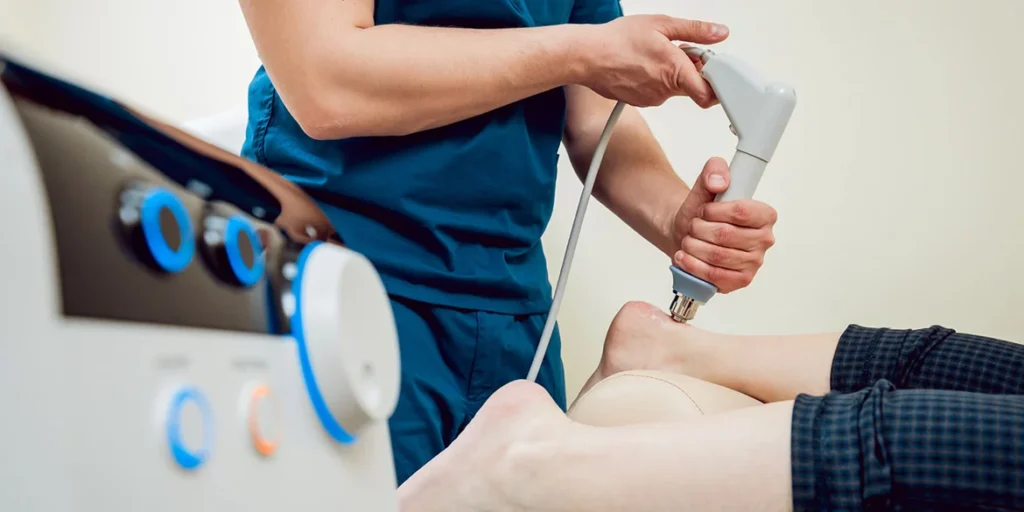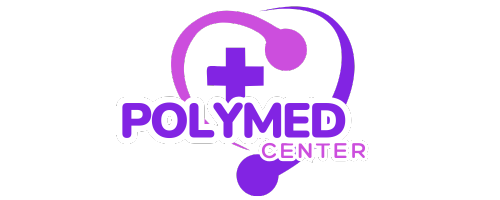
Tendinopathy is a recurring problem for many athletes. They can The result is more pain and hindrance to sports preparation, and an increased risk of more serious injury.
Visit The recommended treatment often involves resting, which is detrimental to training and is poorly accepted by the athlete. Shockwave therapy is an interesting alternative to traditional treatments, as it it allows training to continue, and is much better tolerated by the patient.
Shock wave therapy
Also called SWT (ShockWave Therapy), it is a high-intensity extracorporeal acoustic wave therapy aimed at treating musculoskeletal disorders of the locomotor system.
This technique was introduced into medicine in the 1980s to treat urinary lithiasis and disintegrate stones without causing side effects. It was subsequently extended to the treatment of tendon calcifications, then of non-calcified tendinopathies.
Shockwave therapy is an alternative technique with many advantages:
- It's non-invasive, ambulatory and atraumatic;
- It requires no anesthesia or medication;
- Total treatment time is shorter and recovery is faster;
- There are very few side effects;
- It does not imply strict rest, and sportsmen and women do not have to stop training (except for competitions).
Shock waves: principle and effects
The shockwave principle
The physiotherapist uses a device to apply repeated pulses on the area to be treated, through the skin tissue. He uses a handpiece with a tip whose size and shape vary according to the area to be treated. He sets the parameters by depending on treatment intensity and patient tolerance.
The protocol generally comprises 4 to 6 sessions (1 session per week, with a 5-day rest between sessions) lasting 5 to 10 minutes:
- The doctor seats the patient and performs a clinical examination of the area to be treated;
- He sets the device parameters: pressure (2.5 to 3 bars), frequency (10 to 15 Hz) and total number of pulses (2000 to 3000);
- He applies a contact gel;
- He applies the gun head to the area to be treated for a few minutes;
- He can ice the area to soothe post-session pain.
6 weeks after the last session, the physiotherapist performs a follow-up assessment of the treated area. During treatment, continued physical activity is recommended (without competition or strenuous effort), to promote healing of tendon fibers.
The effects of treatment
Shockwave treatment has beneficial mechanical and metabolic effects on pain and healing:
- Analgesic action: repeated shocks trigger the release of analgesic substances (endorphins) at local level, resulting in rapid pain reduction during the session. They also reduce the concentration of the pain neurotransmitter P-subtance, which in turn reduces pain.
- Tissue defibrosing action, which is similar to that of deep transverse massages: creating micro-lesions that induce a healing process.
- Vascular action: pulses lead to hypervascularization and revascularization, improving local metabolism, increasing growth factors and promoting better healing.
- Decalcifying action, which will destroy the calcifications.
Indications for shockwave therapy
Shockwave therapy is mainly used in physiotherapy, orthopaedics and sports medicine, and is used to treat various types of pathology:
- Tendinopathies (patellar tendinopathies), epicondylitis, achillodynia;
- Calcifications, calcaneal spurs, exostoses, scapulohumeral periarthritis, poor bone healing;
- Enthesopathies;
- Trigger point pain;
- Fibrosis;
- Various back and neck pains;
- Repeated muscle tears;
- Sports injuries (plantar fasciitis, periostitis).
Contraindications
Shockwave treatment has very few side effects: irritation, ecchymosis, temporary local pain. However, it is contraindicated in certain cases:
- In areas of bone growth or osteosynthesis;
- On the trunk area, because of its proximity to vital organs and vertebrae;
- In case of anti-coagulant treatment or coagulation disorders;
- Growth pathologies (Osgood-Schlatter disease, which mainly affects the knee in young athletes; Sever's disease, which mainly affects the heel in young athletes);
- Complex regional pain syndrome (algodystrophy);
- For people with a Pacemaker;
- If metal equipment (plates, screws, etc.) is in the vicinity of the area to be treated;
- In the case of infiltrations or surgery less than one month old;
- In case of pregnancy;
- In case of tumor, infection or wound.
Shock waves: promising results!
In terms of therapeutic efficacy, shockwave treatment offers very good results, especially since the subject is sporty and motivated, and the pathology fairly recent. It rapidly reduces pain and improves quality of life, while enabling moderate physical activity below the pain threshold.
For pathologies less than 6 months old, when the diagnosis is well made and the adjustment parameters are adapted, we observe from 75 to 80% of significant positive results:
- Significant or complete reduction in pain and discomfort ;
- Accelerated healing ;
- Business resumed at previous level.


